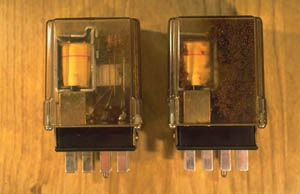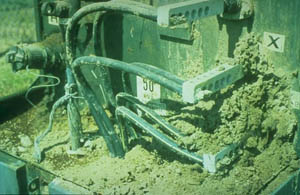Electrical Equipment and Utility Housing Treatment Program


NOTE: For safety reasons, an electrician or a licensed pest control operator should treat infested electrical equipment. Specialized product and training are necessary to treat these sites safely and effectively.
Treatment Program
- Turn off all electrical service before starting.
- With an individual mound treatment method, eliminate colonies around electrical and plumbing casings and housings.
- Injectable aerosol products containing pyrethrins give rapid control.
- Hydramethylnon, abamectin, indoxacarb, and spinosad baits applied to individual fire ant mounds will provide control in about 1 week, even if the colony is located within the structure.
- Do not use liquid drenches, sprays, or products that may damage insulation around electrical fixtures.
- Treatment of a larger area around the electrical structure is optional.
- Mound and area treatments are described in the section on Home Lawns and Other Ornamental Turf Areas.
- Be extremely careful when applying pesticide around water systems and well heads to prevent contamination of wells and ground water.
- Once ants are eliminated, remove debris and soil from equipment housing to reduce possibilities of short circuit.
- Treat the inside of equipment housings with products labeled for this use, such as Rainbow® Fire Ant & Insect Killer (chlorpyrifos), Ascend® (abamectin), or Hot Shot® No-Pest Strip 2 (dichlorvos).
Maintenance
- After ants are removed from the electrical equipment, prevent reinfestation, and damage.
- Where possible, seal all sensitive electrical components, particularly those that are not insulated.
- Examples are plastic housings containing contact points of switches, relays and circuit breakers.
- Spray long-residual contact insecticides around housings, making sure to avoid the electrical circuitry or components.
- Apply specifically labeled products to the housing itself or the mounting pad (see Step 10 in the treatment program above).